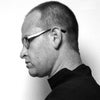Several years ago, I came across a startling passage, a throwaway concept in a book which overflows with ideas. This is the passage:
If texts with narrative plots and wholesome structures are read and written according to disciplines and procedures conforming to their configurations, then perforated structures, degenerate formations, and plot holes must have reading and writing methodologies of their own.
- Reza Negarestani, Cyclonopedia
I find this proposal irresistible, and have already used it in guiding an analysis of China Miéville’s 2016 novella This Census Taker. That piece can be found here, at The Critical Flame. And I find myself about to use the proposal again in discussing Andrew Sendor’s new body of work, Saturday’s Ascent, currently on view at Sperone Westwater. This is a group of paintings, accompanied by a recording, which recounts, in cryptic fragments, the story of Saturday, a mountain climber who has gone missing, and the impact of her disappearance on her family and friends.
I spoke to Sendor about the work. Further observations after the interview.

Lamar Beray and Helvetica in a hypnosis session at Nocturnes, Friday, November 11th., 2016, oil on panel in white powder coated aluminum frame, 24 1/4 x 18 1/4 x 1 1/2 inches (62 x 46 x 4 cm), SW 16081
DANIEL MAIDMAN: Your paintings have an unusual degree and type of narrative content. They make use of the aesthetics of snapshots or studio portraits, while portraying clearly constructed scenarios involving strange characters, places, and objects. When the viewer confronts your work, the combination of elements activates not only his tools for understanding narrative film, but for me, the novel as well. There is something novelistic about your work. And of course, you often provide auxiliary materials - audio recordings, short films - which reveal that a novelistic narrative does exist, of which the paintings can be seen as artifacts. Because you do this, you subject yourself to a host of literary concerns which often do not apply in painting. The one I'm finding interesting when I think about your new show is the idea of the open narrative. There are a couple of open narrative phenomena common to representational painting - either an image which is formally incomplete, obscure, or illegible, or an image which can be read but not definitively deciphered. To this, you add the literary tools of the story in which key information is withheld, the resolution never reached, the meaning perpetually obscured. Could you talk a bit about any thoughts you have had about the many layers of the concept of the open narrative you have woven through your work? Or, if you find it interesting, how you came to take such a literary approach to a medium which often fights it?
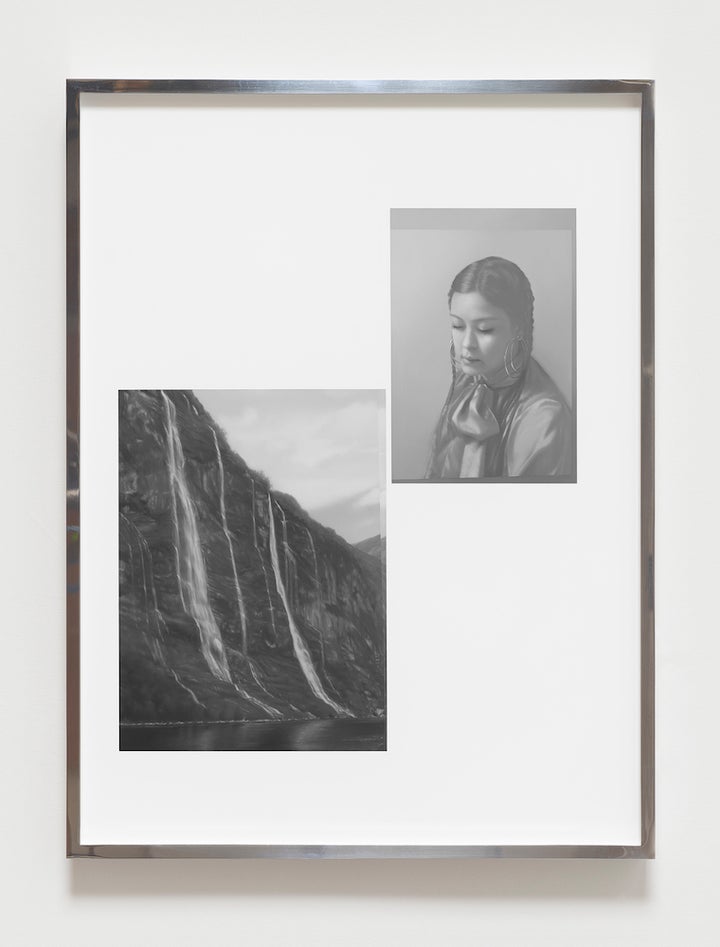
Saturday praying with The Seven Sisters in Geirangerfjorden, Friday, March 13th., 2016, oil on matte white Plexiglas in polished aluminum frame, 26 3/4 x 20 1/4 x 1 1/2 inches (68 x 51,5 x 4 cm), SW 16186
ANDREW SENDOR: Writing has become an essential aspect of my creative process. At the outset of a body of work, I transcribe descriptions of the characters, the situations they find themselves in, and their interrelationships. As critical moments in the narrative begin to take form as painted images, additional details within the story emerge. I developed this particular body of work over the course of approximately 14 months, during which the narrative slowly evolved in tandem with the creation of the painted images. The hovering resolve within the 'open narrative' to which you refer stems from my motivation to present glimpses into the lives of specific characters, as opposed to crafting a structured story with a beginning, middle, and end. While there is a deliberate sequence of events that can be found in the audio narration, the story never really ends; it merely fades into the unknown. I've always been drawn to stories that possess and/or reflect a certain level of porosity—allowing space for the audience/viewer/reader to enter and ultimately engage their own imaginations.
It’s interesting that you highlight the idea of painting as a medium that fights a literary approach. For years I was reticent to publicly use the word 'fiction' when talking and writing about my work. While I'm in the business of dealing with fabricated realities—or, working with an internal logic that is ultimately separate from our shared reality—for me, as the creator, the reality present in the work is 'real' and has the potential to resonate with the viewer on a psychological and emotional level. Recently, however, I’ve started to use the term ‘fiction’ or to refer to my characters and narratives as ‘fictitious’ in nature. While the term ‘fiction’ isn't commonly used within the discourse surrounding painting, it becomes applicable to parsing the type of paintings that I'm creating.
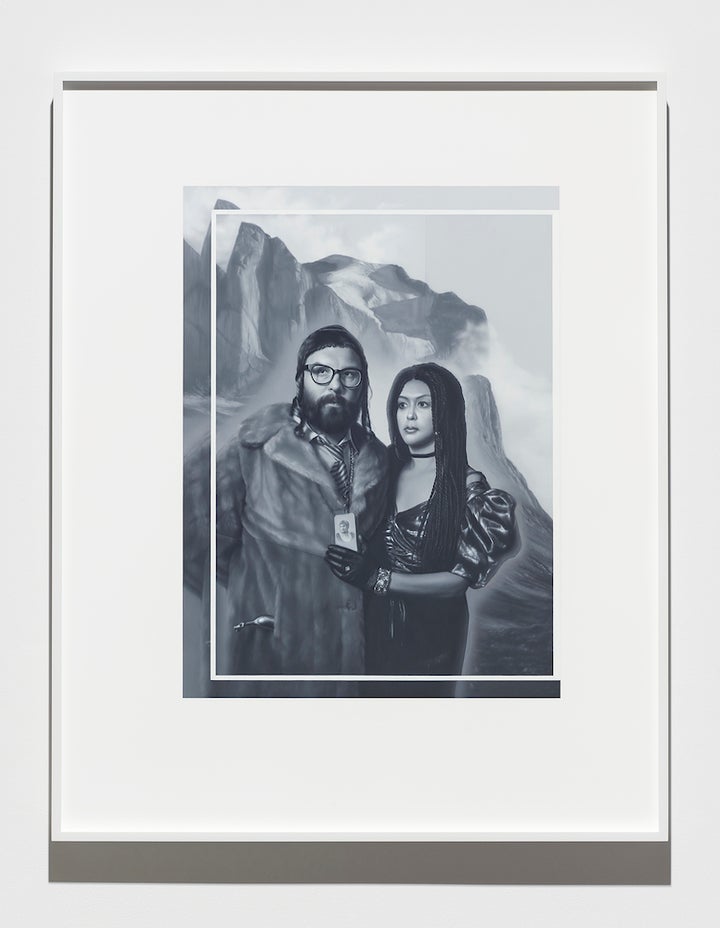
Portrait of Delmar Beray & Saturday with Mount Thor, Wednesday, August 17th (included in Saturday's altar on Monday, December 5th)., 2017, oil on matte white Plexiglas in white powder coated aluminum frame, 41 x 32 3/4 x 2 inches (104 x 83 x 5 cm), SW 17042
DM: Tackling the paintings from another angle - let's address the strange space you create, not in the content of the image, but in the purely formal scaffold of the work. Can you discuss the ideas that animate your off-kilter framing and the "glitches" that appear in your work - startling non-diagetic straight lines which divide your images, so that the image appears slightly different on either side of the line?
![Lamar Beray and Helvetica in a hypnosis session at Nocturnes, Friday, November 11th., 2016 [detail]](https://img.huffingtonpost.com/asset/58f6ebed14000029001b504e.jpg?ops=crop_0_0_609_638%2Cscalefit_720_noupscale)
Lamar Beray and Helvetica in a hypnosis session at Nocturnes, Friday, November 11th., 2016 [detail]
AS: For the past half decade, I've been investigating the ways in which the distribution and consumption of images have changed with the proliferation of digital photography. When looking at the history of image creation, a critical era that is often highlighted is the middle of the 19th century. As the science of photography advanced from the first daguerreotypes in 1839, critics attacked painting, accusing it of inadequacy in accuracy and speed as compared to its unexpected nemesis, the photograph. Such debates have swirled around the act of painting decade after decade… if we fast-forward to the 1990's when digital cameras started to become more commonplace, the strained relationship between painting and photography was forced to be reappraised. The conversation eventually refreshed with a new tone and ultimately new content. Once upon a time, a printed photograph functioned as an objective frame of reality—a document captured by the clinical austerity of a machine. This idea prevailed until the widespread digitization of photos replaced the analog format. With the eventual ubiquity of graphics-editing programs, the options for manipulating a photo became relatively easy and quick. This inconstancy combined with our image-saturated environment, largely due to portable computers, smart phones, social media, etc., makes for a peculiar situation that adds up to images being unstable. The reception of images is slippery, and when I'm creating a painted image, I conceive of its essence in a transitory state. My painted images are fractured, fragmented, skewed, asymmetric, slanted, distorted, inconsistent, slipping within their compositions, unstable.
DM: Compared with many artists, you spend an extraordinary amount of time on your work. But you don't produce hyper-detailed, patterned, or repetitive work. Rather, the work goes into refining the execution. It's not photorealistic, but in some sense it prompts the viewer to reach for the word "perfect." This is a difficult term to define, and obviously all real objects have imperfections. In my own thinking about your work, I think the concept of the perfect is most productive in relation to the concept of the artifact. Your work presents itself to me not so much as a set of paintings, but as a set of artifacts of an imaginary history. They are perfect artifacts, and in this context we can define perfection: they erase the history of their manufacture. They appear to have arisen from a natural or metaphysical process, without intervention by human hands or motives. I think Kubrick was aiming for this with his work as well. Some of the uncanny quality of your work arises, for me, from the fact that they are synthetic natural objects.
So this is what I am seeing when I look at the mind-bogglingly meticulous technique you use. Can you talk a bit about how well this model overlaps with your own considerations in making your work, and also where you are coming from with the "perfection" technique?
AS: I love that you raised this topic, as it is something that I have been thinking about for years. There are numerous motives that propel me to create objects that contain painted images in the way that I do.
People often ask me where my imagery comes from, who the characters are and what type of lives they lead. While my process involves writing, character development, collaborations with performance artists, costume design, set design, orchestrated lighting, photographic documentation, and painting methodologies, the lion’s share of what I do originates from reacting to “sudden visions” that I witness. I never try to come up with ideas; rather, I react to that which appears in my consciousness. One desire I have is to project, as clearly as possible, these “sudden visions.” As if I was an impartial witness to a particular event. Ultimately, I’m more invested in the essence of a painted image’s outward appearance than in the paint that was moved around to get it there. At the same time, I’m aware that a certain level of curiosity in the viewer is stimulated by virtue of not knowing exactly how a handmade object came into being.
Interesting that you speak of filmmaker Stanley Kubrick, as I identify with film’s notion of asking the viewer to sign an invisible contract—an agreement to momentarily suspend one’s disbelief in exchange for being transported to another place. Part of my approach within the act of painting is to distance myself, my hands, my own subjectivity, in the hope that I’m affording the viewer an opportunity to have an empathetic understanding of my characters and the circumstances in which they’re situated—to slip into the reality of this other place.
END OF INTERVIEW
The remaining analysis pertains to the art, but not necessarily to the artist – which is why I ended the interview where I did, and retreat into my own ruminations for the rest. Sendor discusses the suspension of disbelief, and yet the story in his work is not so simple. He does make use of many of the tools which persuade a viewer to suspend disbelief; but he simultaneously deploys a range of counter-tools to trip up the viewer’s immersion in the work. The odd framing and the glitches interfere with the window-like property of realistic painting, reminding us that the image is artificial. The paint technique, which seems so realistic, has a silvery quality, a bland gleam to the highlights and lack of accentuation in certain shadows, which foregrounds the image as a construction rather than a portrayal. The narrative has the wildly unlikely and overdetailed quality of a dream in its final state of decay, yielding artwork titles like Walitha with a found arm at Death Butter Lake, Wednesday, November 16th (included in Saturday's altar on Monday, December 5th). And at every turn, the staging confounds our attempts to buy into it – there is a childish, dress-up quality to the props: a laminated card on a lanyard around one character’s neck, a dollar-store plastic mask in another character’s hand. These incongruities can hardly be accidents. Sendor’s method is so overpowering that it leaves no room for accident. It demands that we seek meaning in everything that survives its incandescent glare.
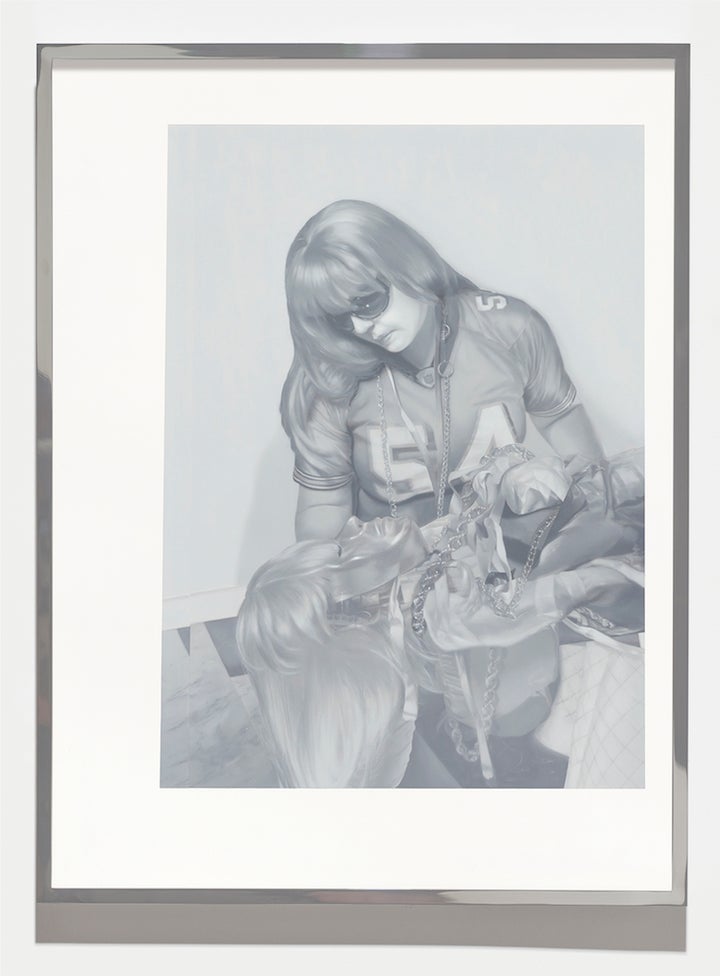
Aranxa with Saturday's proxy made by Raphael Gordo de Papel, Saturday, November 12th., 2016, oil on panel in in polished aluminum frame, 32 1/4 x 24 1/4 x 1 1/2 inches (82 x 62 x 4 cm), SW 16185
How should we interpret then this fragmentary story of the missing woman Saturday, and her family and her friends? Negarestani’s proposal for a method of reading perforated stories returns to mind, because Sendor’s work here is not remarkable for the world it creates, but for the world it willfully fails to create. It is only through the fanatical completeness of Sendor’s creation that the shape of something missing gradually emerges. There is a frightening description in Jeff Vandermeer’s 2014 novel Annihilation, set in and around an enigmatic Area X, of journals left by doomed teams of scientific investigators:
One journal, half-destroyed by the damp, focused solely on the qualities of a kind of thistle with a lavender blossom that grew in the hinterlands between forest and swamp. Page after page described encountering first one specimen of this thistle and then another, along with minute details about the insects and other creatures that occupied the microhabitat. In no instance did the observer stray more than a foot or two from a particular plant, and at no point, either, did the observer pull back to provide a glimpse of base camp or their own life. After a while, a kind of unease came over me as I began to perceive a terrible presence hovering in the background of these entries. I saw the Crawler [a monster] or some surrogate approaching in that space just beyond the thistle, and the single focus of the journal keeper a way of coping with that horror.
- Jeff Vandermeer, Annihilation, p. 114
The same foreboding quality emerges in Saturday’s Ascent. If, as Sendor says, the images begin to slip, what does their slippage reveal? They are so precise, so clean, so encyclopedic, that when they begin to fail, we can trace their edges. We can precisely measure the area they no longer cover. But we cannot quite make out what is revealed behind.
If Portrait of Lafayette with Bhaya on the southwest wall of Saturday's living room. is a studio portrait of a little girl riding her horse –
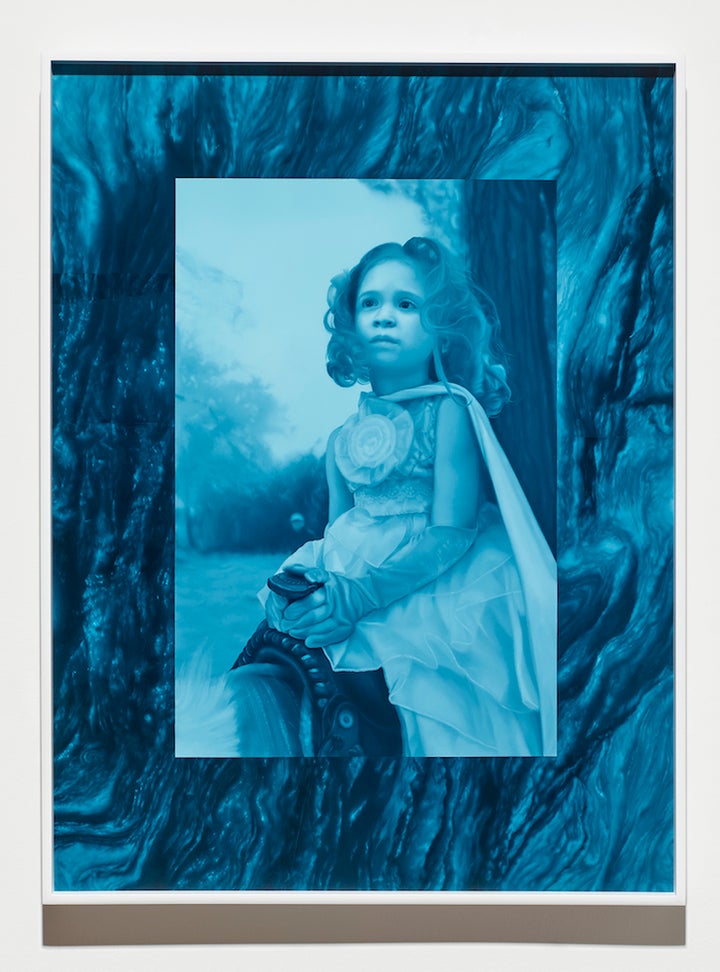
Portrait of Lafayette with Bhaya on the southwest wall of Saturday's living room., 2017, oil on matte white Plexiglas in white powder coated aluminum frame, 26 5/8 x 20 1/8 x 1 1/2 inches (68 x 51 x 4 cm), SW 17041
– then what is that behind the portrait?
![Portrait of Lafayette with Bhaya on the southwest wall of Saturday's living room. [detail, lower right corner]](https://img.huffingtonpost.com/asset/58f6ecbb14000029001b5050.jpg?ops=crop_0_0_580_533%2Cscalefit_720_noupscale)
Portrait of Lafayette with Bhaya on the southwest wall of Saturday's living room. [detail, lower right corner]
Or in a less explicit sense, what is it that Saturday sees in Saturday in search of Knivsfla in Geirangerfjorden, Saturday, March 14th. which we do not see and will never see?
![Saturday in search of Knivsfla in Geirangerfjorden, Saturday, March 14th., 2016 [detail], oil on matte white Plexiglas in polished aluminum frame, 26 3/4 x 20 1/4 x 1 1/2 inches (68 x 51,5 x 4 cm), SW 16187](https://img.huffingtonpost.com/asset/58f6ecdf1400002c001b5052.jpg?ops=crop_0_0_714_565%2Cscalefit_720_noupscale)
Saturday in search of Knivsfla in Geirangerfjorden, Saturday, March 14th., 2016 [detail], oil on matte white Plexiglas in polished aluminum frame, 26 3/4 x 20 1/4 x 1 1/2 inches (68 x 51,5 x 4 cm), SW 16187
A narrative gap, an absence, torments Sendor’s characters: where did Saturday go? A different and more existential gap confronts the viewer: what is this ghoulishly incomplete narrative meant, unsuccessfully, to hide?
For me, this is the power of the work. Its apparent craving for control, for total control, of form, of content, of artist, of viewer, is merely a procedure for outlining something utterly uncontrolled and uncontrollable. Its precision serves only to define a Mystery. This screaming Mystery deflates when it is conceived as a presence, but when it is presented through gaps and holes of exact dimension – it expands and expands and expands.
--
Andrew Sendor
An installation of paintings accompanied by an audio narration
On view from March 30-April 29, 2017
Sperone Westwater
257 Bowery
NYC, NY 10002
